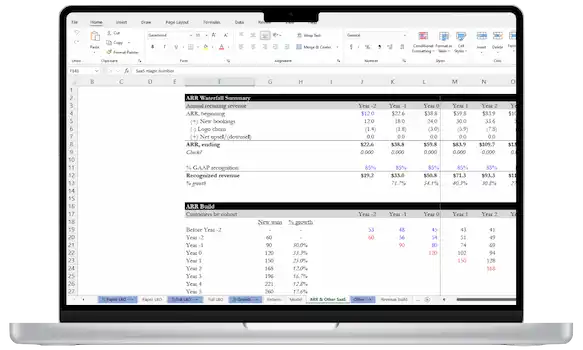Growth equity investment criteria
To understand growth equity investments, first we must discuss typical investment criteria for deals. Growth equity investments typically embody many (if not all) of these characteristics:
- Significant customer traction and/or revenue
- Strong growth in revenue (e.g. at least 10%, but usually 30% or higher)
- Offer technology-enables services or products
- Established business model (e.g. paying customers with path to sustainable long-term margins)
- Positive (or nearly positive) profitability; typically, no further fundraisings are planned until after IPO or exit
- Deal involves the purchase of a non-controlling, minority ownership stake (less than 50%)
- Proceeds from investment are typically used to accelerate growth (or provide secondary liquidity to shareholders)
- Do not typically high loads of debt
- Growth (instead of debt) is primary driver of deal returns
Among the criteria listed above, perhaps the most contentious are: “positive (or nearly positive) profitability” and “established business models.” These factor create a schism of sorts among growth stage investors.
While many growth investors have made a fortune investing in successful venture-backed startups that have reached the growth stage, some growth investors (e.g. TA Associates and Summit Partners) tend to eschew such investment opportunities, reasoning that these companies are further away from profitability and have less evidence of a sustainable business model — especially given their high valuations.
Instead, such firms seek out investment targets that have strong, profitable businesses that are growing quickly but are more under-the-radar (e.g. family-owned, non-tech industry, etc.).
How does a growth equity investment work
Most growth equity investors describe their core job responsibility as “identifying the fastest growing markets in the world, and then investing in the best companies in those markets.”
While there are diverse philosophies among firms on how to best to do this, many growth equity funds would describe the ideal process as:
- Firm develops a “thesis” about why a market is attractive or poised for growth
- Firm becomes expert on this industry through research and meeting with companies
- Firm identifies the market-leading companies within that industry
- Firm invest in the best one
Of course, every process and every firm is different. The reality is that, given the competition within growth stage investing, many firms operate more opportunistically, frequently evaluating markets and prospective deals reactively after being notified by sell-side bankers.
Which stage is growth equity
In theory, “growth” investments can occur at any stage or round; there are no exact cutoffs for which rounds qualify (e.g. Series A, B, C) as a “growth” round. Rather, it can be helpful to think remember that any round can qualify as a “growth” round so long as it has the attributes listed above.
Given that proviso, a given startup today would likely start to meet the “growth” qualifications above in the Series C or later. While this Series C cutoff is debatable, this is when many investors start looking to approach profitability while still taking on expansion capital.
That said, a company may have never taken any outside investment previously (so-called “bootstrap”), and still have reached a level of traction and de-risking to attract growth stage investors.
While investments in IPOs or public-traded companies can be considered “growth” investments — given the company’s characteristics — most growth equity investors do not participate (instead focusing on investments in privately-held companies) in accordance with their Limited Partners preferences. (In case you’re curious why, LPs do not want to pay such high fees to growth equity funds to simply purchase publicly traded shares they could easily purchase themselves on their Schwab account!)

- 88 lessons
- 18 video hours
- Excels & templates
What makes a good growth equity investment
An attractive growth equity investment usually meets many or all of the core criteria of strong growth, minority stake, low debt, proven business model, and positive or near-positive profitability.
However, it’s important to remember that one factor is usually most important — growth. As the name implies, “growth” equity investments generate returns through growth. This means that the rate of revenue (or EBITDA) growth for any prospective deal is of utmost importance. There’s not usually a hard-and-fast rule, but many growth investment firms target companies that have a higher rate of growth than the fund’s return target (say, 25%+).
Every investor has his or her own framework for assessing companies. At General Atlantic — a top growth fund where I worked — a Managing Director once taught me his favorite mental model for what makes an attractive growth investment. It’s called the “3Ms”:
- Market – Large and growing market that provides strong tailwinds
- Business Model – Company has a strong business model that, once at scale, can provide durable margins and defensibility for the company
- Management – A visionary management team that will drive and execute against ambitious growth opportunities
Above provides a simple and easy framework to assess the key merits of growth equity investments quickly. Just note, however, these are just a few of the criteria. There are several other considerations one must take into account when actually determining the merit of a deal. For instance, here are a few more considerations related to the transaction itself:
- Competitive Deal Dynamics – Are there many firms competing to do this deal, or is the opportunity “proprietary” to your firm?
- Sector Fit – Does your company invest in companies within this industry?
- Investment Size & Ownership – How large of an investment is the firm looking for, and given your desired ownership stake, does this fit into your firm’s investment parameters?
- Governance – Is the company looking to add board seats as part of the transaction, and does your firm require this as a condition for investment?
- Value Add – Can your firm provide expertise or services that will help the company with strategic initiatives (e.g. hiring, geographical expansion, future fundraising, etc.)?
Growth equity examples
An iconic example of a growth stage investment was Silver Lake’s investment in Chinese goods marketplace, Alibaba. Over multiple investment rounds in 2011 and 2012, Silver Lake invested $500 million for a minority ownership stake in Alibaba (estimated to be less than 5%, valuing the business at over $10 billion).
By 2011, it was clear that Alibaba had significant traction, was growing rapidly, and had an attractive marketplace business model. The company had also identified ways they could scale even faster if they had more capital. In summary, the stage was set for an awesome growth investment.
That said, there were also clear risks. At such a high valuation and low ownership stake, Silver Lake wouldn’t have much (if any) official oversight of management. Further, Western investment firms didn’t have as much experience investing in Chinese companies. Finally, what if China’s weak currency and strong industrial advantage — arguably, catalysts underlying Alibaba’s huge market opportunity — weakened in the future?
How’d it turn out? Well, in 2014 when Alibaba went public, Silver Lake’s stake was valued at more than $5.1 billion, achieving more than a 10x return and $4.5 billion in net gain. If we assume Silver Lake itself would earn 20% of the net gain, as is the standard “carry” for growth funds, the firm’s partners would have earned nearly $1 billion on the deal. Not. Too. Bad.
Other examples of iconic growth deals include:
- General Atlantic / Adyen – General Atlantic invested $250 million in 2014, which valued the company at $1.5 billion. At IPO in 2018, this stake was worth $1.4 billion (5.5x or ~53% IRR).
- DST / Facebook – DST led the Series D investment of $200 million in 2009, which valued the company at $9.8 billion. At IPO in 2012, this stake was worth $2.0 billion (10.2x or ~115% IRR)
- Tiger Global / Stripe – Tiger Global invested nearly $345 million across two growth rounds in 2018/2019, each time valuing the company at over $20 billion. At Stripe’s $95 billion valuation achieved in March 2021, this stake was worth $1.6 billion (4.6x or ~89% IRR)
Conclusion
Check out the rest of my growth equity primer if you’d like to dive deeper into the industry, investment strategy, or career path.
Also, if you’re interested in a career in growth equity, check out my step-by-step course on how to get into growth equity.


 Break Into Growth Equity
Break Into Growth Equity
